Biostatistics Decoded
Original price was: ₹5,404.00.₹4,323.20Current price is: ₹4,323.20.
ISBN: 9781119953371
Author/Editor: A. Gouveia Oliveira
Publisher: John Wiley
Year: 2013
1 in stock (can be backordered)
Description
Study design and statistical methodology are two important concerns for the clinical researcher. This book sets out to address both issues in a clear and concise manner. The presentation of statistical theory starts from basic concepts, such as the properties of means and variances, the properties of the Normal distribution and the Central Limit Theorem and leads to more advanced topics such as maximum likelihood estimation, inverse variance and stepwise regression as well as, time-to-event, and event-count methods. Furthermore, this book explores sampling methods, study design and statistical methods and is organized according to the areas of application of each of the statistical methods and the corresponding study designs. Illustrations, working examples, computer simulations and geometrical approaches, rather than mathematical expressions and formulae, are used throughout the book to explain every statistical method.
Additional information
| Weight | 0.45 kg |
|---|
Product Properties
| Year of Publication | 2013 |
|---|---|
| Table of Contents | Preface ix 1 Introduction 1 1.1 The object of biostatistics 1 1.2 Defining the population 4 1.3 Study design 4 1.4 Sampling 6 1.5 Inferences from samples 9 2 Basic concepts 15 2.1 Data reduction 15 2.2 Scales of measurement 15 2.3 Tabulations of data 18 2.4 Central tendency measures 19 2.5 Measures of dispersion 20 2.6 Compressing data 21 2.7 The standard deviation 23 2.8 The n-1 divisor 24 2.9 Properties of means and variances 26 2.10 Common frequency distributions 28 2.11 The normal distribution 29 2.12 The central limit theorem 31 2.13 Properties of the normal distribution 31 2.14 Statistical tables 34 3 Statistical inference 37 3.1 Sampling distributions 37 3.2 The normal distribution of sample means 39 3.3 The standard error of the mean 40 3.4 The value of the standard error 42 3.5 Inferences from means 43 3.6 Confidence intervals 45 3.7 The case of small samples 46 3.8 Student s t distribution 48 3.9 Statistical tables of the t distribution 51 3.10 Estimation with binary variables 53 3.11 The binomial distribution 54 3.12 Inferences from proportions 55 3.13 Statistical tables of the binomial distribution 58 3.14 Sample size requirements 59 4 Descriptive studies 63 4.1 Classification of descriptive studies 63 4.2 Probability sampling 64 4.3 Simple random sampling 66 4.4 Replacement in sampling 67 4.5 Stratified sampling 70 4.6 Multistage sampling 74 4.7 Prevalence studies 77 4.8 Incidence studies 78 4.9 The person-years method 80 4.10 Non-probability sampling in descriptive studies 81 4.11 Standardization 82 5 Analytical studies 87 5.1 Design of analytical studies 87 5.2 Non-probability sampling in analytical studies 91 5.3 The investigation of associations 92 5.4 Comparison of two means 93 5.5 Comparison of two means from small samples 96 5.6 Comparison of two proportions 98 5.7 Relative risks and odds ratios 100 5.8 Attributable risk 102 5.9 Logits and log odds ratios 104 6 Statistical tests 107 6.1 The null hypothesis 107 6.2 The z-test 108 6.3 The p-value 111 6.4 Student s t-test 112 6.5 The binomial test 115 6.6 The chi-square test 116 6.7 Degrees of freedom 121 6.8 The table of the chi-square distribution 122 6.9 Analysis of variance 123 6.10 Statistical tables of the F distribution 129 7 Issues with statistical tests 131 7.1 One-sided tests 131 7.2 Power of a statistical test 135 7.3 Sample size estimation 136 7.4 Multiple comparisons 139 7.5 Scale transformation 142 7.6 Non-parametric tests 143 8 Longitudinal studies 147 8.1 Repeated measurements 147 8.2 The paired Student s t-test 147 8.3 McNemar s test 150 8.4 Analysis of events 151 8.5 The actuarial method 151 8.6 The Kaplan Meier method 155 8.7 The logrank test 159 8.8 The adjusted logrank test 161 8.9 The Poisson distribution 163 8.10 The incidence rate ratio 166 9 Statistical modeling 169 9.1 Linear regression 169 9.2 The least squares method 171 9.3 Linear regression estimates 174 9.4 Regression and correlation 179 9.5 The F-test in linear regression 180 9.6 Interpretation of regression analysis results 183 9.7 Multiple regression 185 9.8 Regression diagnostics 188 9.9 Selection of predictor variables 192 9.10 Regression, t-test, and anova 194 9.11 Interaction 196 9.12 Nonlinear regression 199 9.13 Logistic regression 201 9.14 The method of maximum likelihood 204 9.15 Estimation of the logistic regression model 206 9.16 The likelihood ratio test 208 9.17 Interpreting the results of logistic regression 209 9.18 Regression coefficients and odds ratios 211 9.19 Applications of logistic regression 211 9.20 The ROC curve 213 9.21 Model validation 216 9.22 The Cox proportional hazards model 219 9.23 Assumptions of the Cox model 223 9.24 Interpretation of Cox regression 225 10 Measurement 229 10.1 Construction of clinical questionnaires 229 10.2 Factor analysis 230 10.3 Interpretation of factor analysis 234 10.4 Factor rotation 236 10.5 Factor scores 238 10.6 Reliability 239 10.7 Concordance 245 10.8 Validity 251 11 Experimental studies 253 11.1 The purpose of experimental studies 253 11.2 The clinical trial population 255 11.3 The efficacy criteria 256 11.4 Non-comparative clinical trials 258 11.5 Controlled clinical trials 261 11.6 Classical designs 262 11.7 The control group 266 11.8 Blinding 267 11.9 Randomization 268 11.10 The size of a clinical trial 272 11.11 Non-inferiority clinical trials 277 11.12 Adaptive clinical trials 284 11.13 Group sequential plans 286 11.14 The alpha spending function 288 11.15 The clinical trial protocol 291 11.16 The data record 292 12 The analysis of experimental studies 295 12.1 General analysis plan 295 12.2 Data preparation 296 12.3 Study populations 297 12.4 Primary efficacy analysis 301 12.5 Analysis of multiple endpoints 303 12.6 Secondary analyses 307 12.7 Safety analysis 308 13 Meta-analysis of clinical trials 311 13.1 Purpose of meta-analysis 311 13.2 Measures of treatment effect 312 13.3 The inverse variance method 313 13.4 The random effects model 316 13.5 Heterogeneity 317 13.6 Publication bias 319 13.7 Presentation of results 322 Further reading 325 Index 327 |
| Author | A. Gouveia Oliveira |
| ISBN/ISSN | 9781119953371 |
| Binding | Paperback |
| Edition | 1 |
| Publisher | John Wiley |
You must be logged in to post a review.

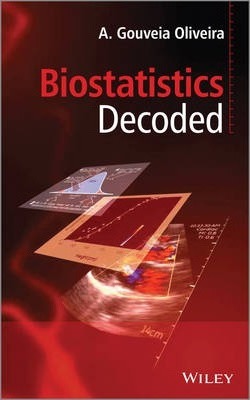
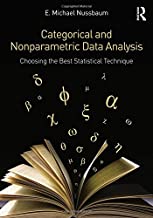
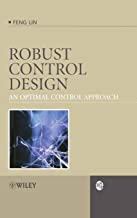
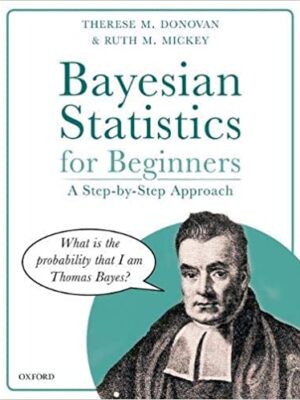
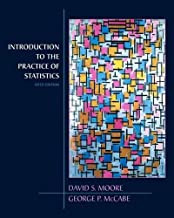
Reviews
There are no reviews yet.